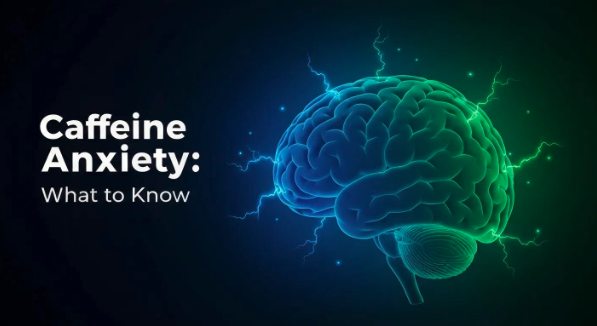Ways to Combat Seasonal Affective Disorder
Discover how to combat seasonal affective disorder (SAD): when seasons affect mood and ways to embrace sunlight.


Understanding Seasonal Affective Disorder
Definition and Overview
Seasonal Affective Disorder (SAD) is a form of depression that occurs at specific times of the year, typically during the fall and winter months when daylight hours are shorter. This condition is characterized by recurring episodes of depression that coincide with seasonal changes. According to the Mayo Clinic, SAD may be linked to changes in light exposure and its effects on the circadian rhythms and serotonin levels in the brain.
SAD can affect anyone, but it is more common in areas that experience long winters and shorter daylight periods. The disorder can significantly impair an individual’s ability to function during the affected seasons and often requires appropriate intervention to manage symptoms effectively.
Damaging Effects of SAD
The impact of Seasonal Affective Disorder extends beyond individual feelings of sadness. It can lead to various physical and mental health complications if not addressed. Below are some of the damaging effects associated with SAD:
EffectDescriptionImpaired Daily FunctioningIndividuals may find it difficult to maintain productivity at work or school during episodes of SAD.Social WithdrawalPeople with SAD often isolate themselves, leading to strained relationships with friends and family.Sleep DisturbancesChanges in sleep patterns, such as oversleeping or insomnia, are common in those affected by SAD.Physical Health DeclineChronic stress and anxiety can exacerbate physical health issues, leading to problems such as weight gain or weakened immune function.
According to the Jefferson Center, individuals suffering from SAD may experience a decline in their overall mental health, increasing the risk of other issues such as anxiety disorders and major depressive disorder. Early recognition and intervention are key to mitigating the damaging effects of SAD. For more information regarding types of depressive disorders, please refer to our article on types of depressive disorders explained.
Understanding seasonal affective disorder (SAD): when seasons affect mood is essential for recognizing its symptoms and pursuing appropriate treatment options, ultimately enhancing overall well-being and mental health.

Symptoms of Seasonal Affective Disorder
Early Signs and Progression
Symptoms of Seasonal Affective Disorder (SAD) often start as mild and can progressively worsen as the seasons change. Typically, signs appear during late fall or early winter, improving during the sunnier days of spring and summer. Interestingly, a smaller group may experience the opposite pattern, where symptoms first emerge in spring or summer [1].
Common early indicators of SAD include:
As the season progresses, these symptoms may escalate, leading to more profound effects on daily life and overall well-being.
Variations in Symptoms
SAD can manifest differently based on whether the onset occurs in winter or summer. This variation can lead to contrasting symptoms between these two types.
Winter-Onset SAD (Winter Depression)
Common SymptomsDescriptionMoodinessIncreased feelings of sadness or irritabilityFatigueLow energy levels, making daily tasks feel overwhelmingChanges in MoodSpikes in depressive thoughts or feelings as the season darkens
Summer-Onset SAD (Summer Depression)
Common SymptomsDescriptionPoor AppetiteDecreased interest in food, often leading to weight lossInsomniaDifficulty sleeping, which can contribute to a generally low moodIncreased AnxietyRising feelings of agitation, restlessness, or irritability
Understanding the specific symptoms associated with seasonal affective disorder is crucial for those experiencing these changes. For comprehensive support, individuals are encouraged to seek help, particularly if symptoms align with recognized patterns [1].
For further insight into clinical depression and its various forms, visit our articles on understanding clinical depression: more than just feeling sad and types of depressive disorders explained.

Risk Factors and Prevalence
Understanding the risk factors and prevalence of Seasonal Affective Disorder (SAD) is crucial for recognizing who might be affected by this mood disorder.
Factors Affecting SAD
Several factors can increase the likelihood of an individual experiencing SAD. These include:
Risk FactorDescriptionBipolar DisorderIndividuals with bipolar disorder are at an increased risk, with symptoms of mania potentially triggered in certain seasons, while depressive episodes may occur in fall and winter months.GenderWomen are diagnosed with SAD more frequently than men. Studies show that hormonal differences may play a role in this discrepancy.AgeYounger adults experience SAD more often compared to older adults, indicating a potential age-related vulnerability.Geographical LocationLiving in areas with long winters and limited sunlight can heighten the risk of developing SAD. Regions farther from the equator tend to have higher rates of this disorder.
Awareness of these factors can aid in early identification and intervention for those susceptible to SAD.
Demographics and Occurrence
SAD affects a considerable portion of the population, particularly in climates with significant seasonal changes. Research indicates that the prevalence of SAD varies based on geographic location, with higher rates found in northern regions due to reduced sunlight exposure during the winter months.
The following table provides an overview of the estimated occurrence rates based on demographics:
Demographic GroupEstimated Prevalence (%)Women60-90% of diagnosed casesMen10-40% of diagnosed casesYoung AdultsMore than 11% prevalent among those aged 18-29Older AdultsLess than 5% prevalent among those aged 60 and above
These statistics emphasize the need for a deeper understanding and the importance of addressing Seasonal Affective Disorder. Individuals who fall within these demographic categories should be aware of the signs and symptoms of SAD to seek appropriate support and treatment.
For more information about the broader context of depressive disorders, check out articles such as understanding clinical depression: more than just feeling sad and types of depressive disorders explained.

Diagnosis and Treatment Options
Identifying and managing Seasonal Affective Disorder (SAD) is crucial for those who experience mood changes linked to seasonal shifts. Understanding when to seek help and exploring various treatment methods can provide relief and improve well-being.
Seeking Professional Help
When symptoms of SAD are persistent and disrupt daily life, it is important to seek professional assistance. Mental health professionals can diagnose SAD through a thorough evaluation of symptoms and history. They may ask specific questions to ascertain if mood changes correlate with seasonal changes and can rule out other depressive disorders.
Individuals who notice significant variations in mood, increased fatigue, or changes in sleep patterns during specific seasons should consider consulting a healthcare provider. Early intervention can lead to more effective management of symptoms.
Available Treatment Approaches
There are several treatment options available for managing seasonal affective disorder. The most recognized therapies include light therapy, psychotherapy, and medications.
Treatment OptionDescriptionLight TherapyInvolves daily exposure to a light box designed to mimic natural sunlight, helping to mitigate symptoms of Winter-pattern SAD. For more information, see NIMH.PsychotherapyTypically, Cognitive Behavioral Therapy (CBT-SAD) helps individuals challenge negative thoughts and develop coping strategies. More on psychotherapy can be found at NIMH.MedicationsAntidepressants, particularly selective serotonin reuptake inhibitors such as bupropion, may be prescribed to address serotonin activity disturbances related to SAD [2].Vitamin D SupplementsMay alleviate symptoms, particularly for those with winter-pattern SAD and vitamin D deficiency; however, evidence regarding its effectiveness is mixed [2].
These treatment methods can improve mood and address the symptoms associated with seasonal changing phases. As each individual may respond differently, it is important to work with a healthcare professional to find the most effective combination of treatments. For further insights into different types of depression, see our article on types of depressive disorders explained.

Coping Strategies for Seasonal Affective Disorder
Coping with Seasonal Affective Disorder (SAD) can be challenging, but various strategies can help manage symptoms and improve mood. This section explores lifestyle changes and psychological support options that can effectively combat SAD.
Lifestyle Changes
Implementing specific lifestyle changes can play a crucial role in managing seasonal affective disorder. Strategies include:
Here’s a summary table of effective lifestyle changes:
Lifestyle ChangeDescriptionLight ExposureIncrease natural light intake; consider light therapy.Physical ActivityEngage in regular exercise for mood enhancement.Sleep RoutineKeep a consistent sleeping schedule.NutritionEat a balanced diet with mood-stabilizing foods.
Creating or reestablishing a social bubble by connecting with friends and family can further enhance emotional support, especially when indoor activities are encouraged due to public health mandates.
Psychological Support
Psychological support plays a vital role in managing seasonal affective disorder. Engaging in therapeutic interventions can provide individuals with tools necessary to cope with their symptoms effectively.
Individuals should not hesitate to seek mental health resources for support, such as community organizations and hotlines. Engaging with mental health professionals can enhance coping strategies, especially during the colder months when symptoms may intensify.
By incorporating these lifestyle changes and seeking psychological support, individuals can develop a comprehensive approach to managing seasonal affective disorder (SAD): when seasons affect mood.
Preventive Measures and Long-Term Management
Early Intervention Strategies
Seasonal Affective Disorder (SAD) can often be predicted based on seasonal changes, making early intervention a critical strategy for managing symptoms. According to the NIMH, individuals with a history of SAD might find it beneficial to initiate treatments before the season that typically triggers their symptoms. This proactive approach may help prevent or reduce the intensity of depressive episodes.
While there is no known way to completely prevent SAD, managing symptoms at the onset can prevent them from worsening over time. This may involve beginning treatment before symptoms usually start, continuing treatment past the usual resolution period, or maintaining a consistent treatment regimen.
StrategyDescriptionProactive TreatmentStart treatments before the onset of symptoms to mitigate potential episodes.Continuous ManagementContinue treatment beyond symptom resolution to prevent recurrence.Regular Check-InsSeek ongoing support from mental health professionals to adjust strategies as needed.
Maintenance of Mental Health
Maintaining mental health throughout the seasons is vital for individuals who experience SAD. Factors like reduced sunlight can lead to lower serotonin levels, significantly impacting mood. It is important to note that a deficiency in vitamin D — common in those with winter-pattern SAD — can exacerbate these issues, as vitamin D plays a role in serotonin activity.
Incorporating lifestyle changes can also be beneficial for sustaining mental health. Regular exercise, exposure to sunlight when possible, and spending time in supportive social circles is essential. Mental health resources, such as Jefferson Center's Colorado Spirit Team, can provide support strategies tailored for coping with SAD [3].
To summarize, effective maintenance and preventive measures include:
MeasureSuggested ActionLight TherapyUse light boxes to increase exposure to bright light during darker months.Regular ExerciseEngage in physical activity to boost mood-enhancing chemicals.Social SupportBuild connections with friends and family for emotional support.Nutritional IntakeConsider consulting with a healthcare provider about vitamin D supplementation.
Engaging in continuous support systems and being proactive with treatment options can help manage SAD effectively. It's advisable to discuss any alternative methods, such as herbal remedies or dietary supplements, with a healthcare provider to ensure safety and clinical efficacy.
References
[2]:
[3]:
[4]:
More Resources
A team ready to start your journey.
Get in touch — today.
We are a safe space – a haven for exceptional individuals to receive discreet, personalized, in-person treatment and care.
.avif)

.webp)








